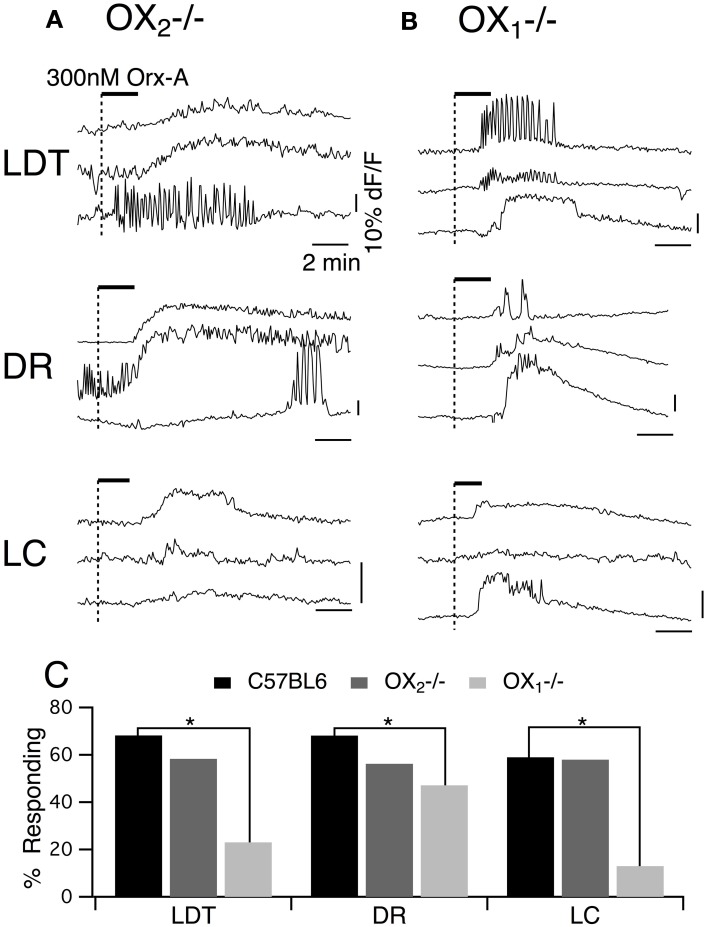Figure 8.
Orexin-A stimulates a larger fraction of LDT, DR, and LC cells via OX1 than via OX2. (A) Orexin-A (Orx-A, 300 nM) evoked Ca2+ transients in LDT, DR, and LC neurons in slices from OX−/−2 mice that were bulk-loaded with fura-2AM. (B) Orexin-A (300 nM) also evoked Ca2+ transients in LDT, DR, and LC neurons in slices from OX−/−1 mice that were bulk-loaded with fura-2AM. The magnitude of the transients evoked by either receptor was not different from that evoked in slices from C57BL6 mice (see text). (C) In slices from C57BL6 mice, 60–70% of fura-2AM labeled cells in LDT (n = 173), DR (n = 113), and LC (n = 98) were activated by orexin. The percentage of cells imaged that responded to orexin-A in slices from OX−/−2 mice (LDT: n = 60; DR: n = 96; LC: n = 43) was not statistically different from that in C57BL6 slices. A significantly smaller percentage of cells imaged in each nucleus was activated by orexin in slices from OX−/−1 mice (LDT: n = 113; DR:n = 87; LC: n = 82). Horizontal bars above the traces indicate application of orexin-A (300 nM). Calibration bars indicate 10% dF/F and 2 min in each panel. *P < 0.05.

